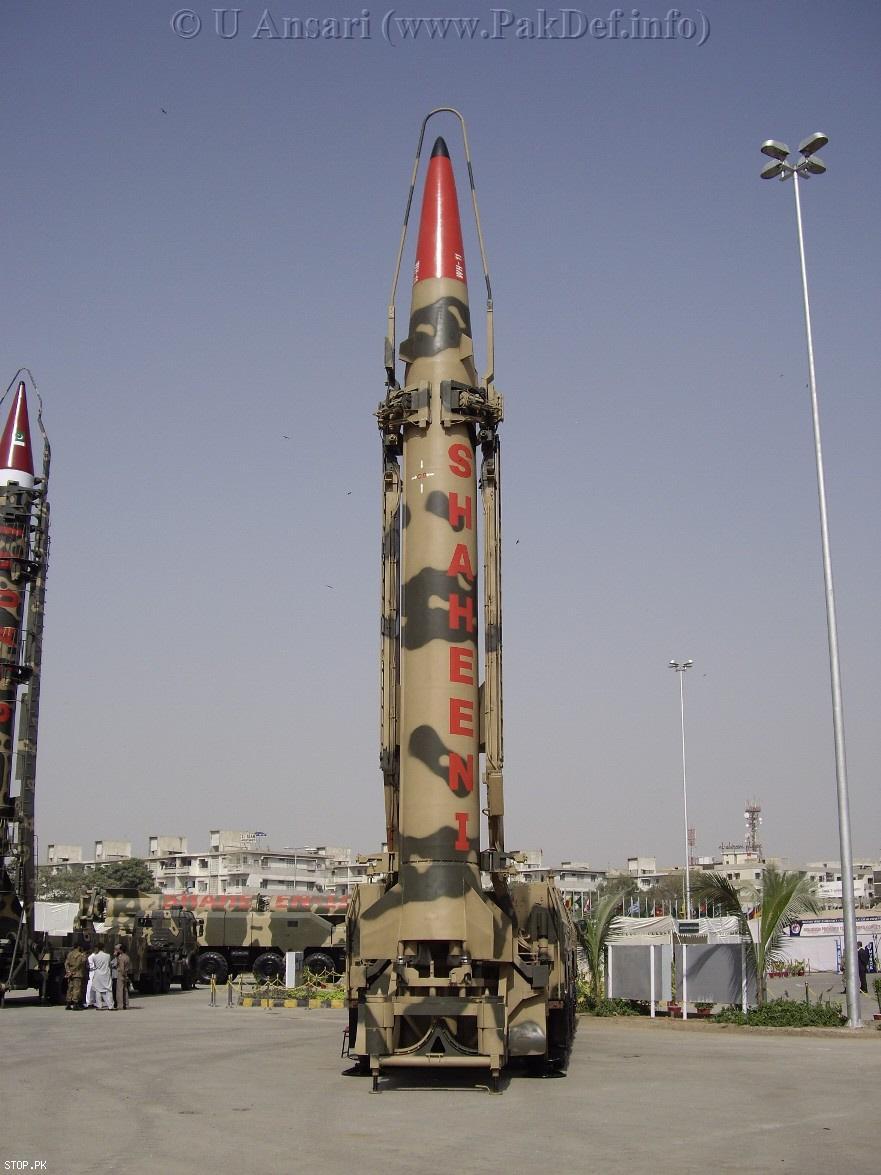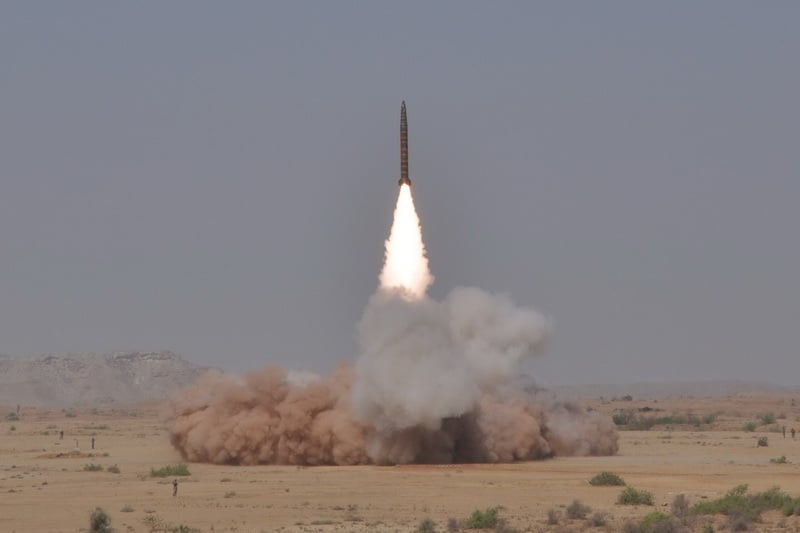Aesterix
BANNED

- Joined
- Jan 26, 2021
- Messages
- 1,257
- Reaction score
- -1
- Country
- Location
Imran khan happened.Why no missile test for past so many months ?
Follow along with the video below to see how to install our site as a web app on your home screen.
Note: This feature may not be available in some browsers.

Imran khan happened.Why no missile test for past so many months ?


And Why we would need that from PRC or NK?Not sure chinese will share ICBM tech with Pakistan or even let North Korea do that same.
Chinese interests ends with providing or facilitating Pakistan with MRBM tech.
Please keep that repetitive condescending Indian C—apa of thinking Pakistanis aren’t capable to yourself.Not sure chinese will share ICBM tech with Pakistan or even let North Korea do that same.
Chinese interests ends with providing or facilitating Pakistan with MRBM tech.

I hope and pray that this arrogance and delusion of grandeur fully seeps into, not only heart and minds of enemy populace but also into those sitting in south block.Please keep that repetitive condescending Indian C—apa of thinking Pakistanis aren’t capable to yourself.


What about plotonium based warheads ? How much cost and time they need? And how much do we have plotnium based facilities

Yes that part is rather interesting , no new projects revealed yet the infrastructure size and locations of NDC have increased quite significantly ,No new missile since decade , did we enrolled mijjiles projects ?? Seriously


What is your source?Pakistan is already in process to develop hypersonic missile based on DF 17

It's just him throwing rumors around so people would watch his low effort YouTube channel instead of getting a real jobWhat is your source?
New Recruit

Bump. Good thread with detailed and well-sourced reliable information.Hatf-3 Ghaznavi SRBM (Range 290 km,Warhead Payload 500 kg [Total 600 kg])
Development History :
Pakistan Army had a wide gap of local missile capabilities,with Hatf-1 having 100 km range and Shaheen-I having 700 km range,because Hatf-2 and 3 were cancelled.Therefore,around 1997-8,NDC (NESCOM) started the development of the Ghaznavi missile,with Abdali being developed in parallel by SUPARCO.The system was first tested in May,2002.
Origins :
In early 1990s,China provided Pakistan with 30-40 M-11 (DF-11) SRBMs,to help it strengthen its Armed forces.These missiles had a range of ~300 km,with a payload of 500 kg and a CEP of 500-600 m.
In appearance and capabilities,Ghaznavi remarkably resembles M-11.In the 1990s,Pakistan also procured critical equipment and machinery for developing missiles locally.Initially,it was decided to mass-produce the M-11s with similar capabilities.Later on,it was decided to make an advanced version of M-11,equipped with modern technologies.
Chinese DF-11A (CSS-7 Mod 2),an advanced version of DF-11/M-11

Pakistani Hatf-3 Ghaznavi (IDEAS,2008)

What Pakistan did :
The local version,tested as late as 2002,had a better solid-fueled motor downgraded from Shaheen-1.Pakistan moved ahead of China,and inducted the aero-spike in the design,which enhanced the performance of the missile in dense atmosphere,enabling it to follow a depressed ballistic trajectory.Later on,China also inducted the aero-spike,in later versions of CSS-7 Mod 2 (DF-11A).Yet another major modification was made,and a locally developed advanced INS was installed,giving the missile a CEP of <50m (As stated by Chairman NESCOM) by aiding the warhead vehicle with a precise Post-separation Attitude Correction System.
Pakistani Hatf-3 Ghaznavi (Azm-e-Nau 3 exercise,2010)

Although Ghaznavi is an off-shoot of M-11 (which itself was an advanced version of Scud-B),induction of indigenous technologies show that Pakistan had the capability of designing SRBMs.But since it was really short on time,Pakistan chose M-11 as a platform and instead did R&D on improving it, according to the modern requirements of Pakistan Army.No doubt,Ghaznavi is the most advanced missile of the two systems, DF-11 (CSS-7) and Scud-B.
So,Hatf-3 Ghaznavi is this much Pakistani :
1. Introduction of the drag-reducing aero-spike on the warhead cone.
2. Locally developed advanced INS,giving a CEP of ~50 m, assisted by
3. Locally developed Post-separation Attitude Correction System.
In effect,indigenously developed Warhead Assembly mounted on "license-produced" missile motors.
Hatf-4 Shaheen-1 SRBM (Range 800 km,Warhead Payload 600 kg [Total 700 kg])
Development History :
Pakistan Army required a longer range SRBM,other than the Hatf-2 and 3 to strike a bit deep inside Indian territory, because of the lessons learned from Iran-Iraq War.Hence,development of Shaheen-1 started around 1993 by newly formed NDC.The system was first tested in April,1999.Development for Shaheen-1 was given more priority than Abdali and Ghaznavi because of its psychological impact,therefore Ghaznavi and Abdali appeared late.
Origins :
According to several Western (US) analysts,Shaheen-1 is a locally produced version of M-9 (DF-15).Others suggest it to be a bigger version of the M-11 (DF-11) missile.However,this is not entirely correct.
Shaheen-1 does not resembles that much to M-9 (DF-15) ,neither in appearance (shape/dimensions) nor in capabilities.
Shaheen-1 is 2.9 m longer and carries 200 kg heavier payload to 150 km more distance than the M-9 (DF-15). Furthermore,Shaheen-I has a launch weight of 9500 kg as compared to 6200 kg of DF-15.
Chinese DF-15 (M-9)

Pakistani Shaheen-1 (IDEAS,2008)

What Pakistan did :
Shaheen-1 has incorporated technologies which were locally developed by extensively studying the M-11 missile and its components.The same facilities set up by the help of China to make M-11 type missiles were given the task to develop Shaheen-1.Some very critical components were bought from China,and the first version of Shaheen-1 was ready by 1999.
Pakistani Shaheen-1 (The black patches near the small stabilizing fins may be antennae intended to service very accurate satellite navigation systems : RD Fisher)

Further development :
Shaheen-1 V1 (version 1) used only Post-separation Attitude Correction System,which correct the trajectory of the Re-entry Vehicle (ReV) immediately after termination of boost phase.Therefore its accuracy was relatively poor,and lied in the same range as of DF-15 (300-500 m).
However,in early 2000s,NDC began development of a modern version,version 2.The Shaheen-1 V2 was more accurate,giving a CEP of <90 m.The new version included Terminal Correction System which corrected the warhead's trajectory in terminal phase by using thrusters mounted in the warhead assembly.Also included was an improved design for the ReV,which enabled it to re-enter the atmosphere at higher speeds.
Shaheen-1 V1 (1999)

Shaheen-1 V2 (Azm-e-Nau 3 exercise,2010) {zoom to see the changed shape of ReV cone}

It can be assumed that though Shaheen-1 has incorporated technologies from M-11 and M-9,still it cannot be termed as an M-9 copy,because it is far more advanced than the M-9.Rather,it is a highly improved and modified version of M-9.
So,it is this much Pakistani :
1. Locally developed, much powerful missile motor giving more range and payload capacity.
2. Locally developed Post-separation Attitude Correction System.
3. Indigenously developed Terminal Correction System.Both are assisted by
4. Indigenously developed Satellite guidance system,which also corrects the errors developing in INS during flight.
Overall,a locally developed advanced missile using the M-11/M-9 as a base.
